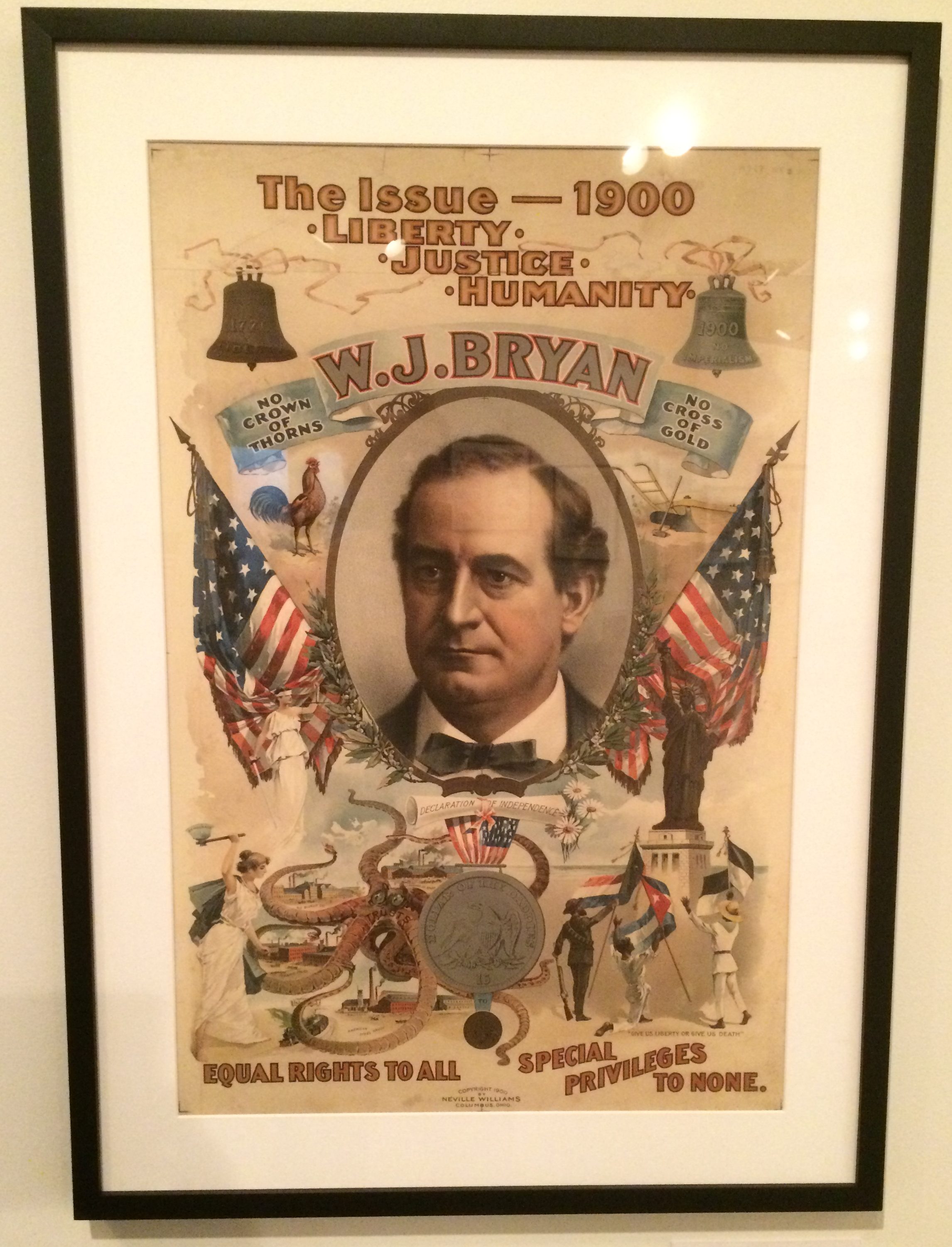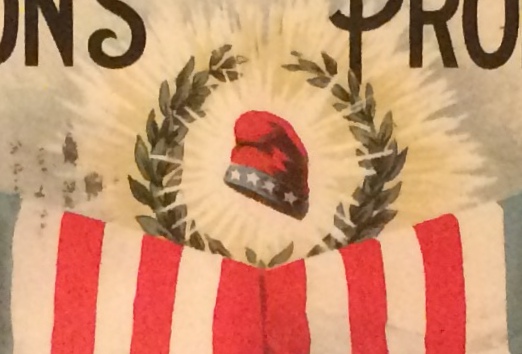Visiting the Elmhurst History Museum for its local history collection was fine, but what I really wanted to see on Saturday — before it ends next weekend — was an exhibit called Sign of the Times: The Great American Political Poster 1844-2012. I’d picked up a leaflet about the exhibit when visiting the Elmhurst Art Museum, so that kind of marketing works sometimes.
The exhibit includes 50 items and occupies the first floor of the museum. I could have spent an hour looking at everything, but not everyone in the family is as enthusiastic about presidential ephemera as I am. Even so, I got a good look and had the chance to explain some things to the girls, such as who this fellow McGovern was. He had a fair number of posters, for all the good it did him.

 As promised, the exhibit begins with the election of 1844. As we all know, Henry Clay headed the Whig ticket.
As promised, the exhibit begins with the election of 1844. As we all know, Henry Clay headed the Whig ticket.
 Less well known is the Whig for vice president that year, Theodore Frelinghuysen of New Jersey. Vice presidents are often obscure, but men who ran for VP and lost tend to be even more obscure. Too bad he was never veep. Vice President Frelinghuysen has a ring to it.
Less well known is the Whig for vice president that year, Theodore Frelinghuysen of New Jersey. Vice presidents are often obscure, but men who ran for VP and lost tend to be even more obscure. Too bad he was never veep. Vice President Frelinghuysen has a ring to it.
The Kellogg Brothers of Hartford, Conn., did the poster. They were rivals of Currier & Ives but about as well remembered as Mr. Frelinghuysen these days. Google Kellogg and you tend to get cereal, and they aren’t mentioned in any Christmas songs that I know of.
“An Illustrative Map of Human Life Deduced from passages in Sacred Writ” (1847), which is Wiki’s example of one of their works, makes for some interesting reading.
These were the days of hand-colored prints. This one’s exceptional.
 John C. Fremont and William L. Dayton, the first Republican candidates for the presidency and vice presidency, in 1856. A wonderfully named artist, Dominique O. Fabronius, did the poster, which was issued by C.E. Lewis of Buffalo. Look at Fabronius’ portrait of “Spoons” Butler here.
John C. Fremont and William L. Dayton, the first Republican candidates for the presidency and vice presidency, in 1856. A wonderfully named artist, Dominique O. Fabronius, did the poster, which was issued by C.E. Lewis of Buffalo. Look at Fabronius’ portrait of “Spoons” Butler here.
On to the golden age of the color lithograph: two posters from the 1900 presidential contest. First, William Jennings Bryan. A busy poster, promising no cross of gold, attacks on the Standard Oil octopus (I assume) and other things.
 William McKinley and TR: an even busier poster.
William McKinley and TR: an even busier poster.
 The artists are unknown in both cases. I enjoyed this detail on the McKinley-Roosevelt poster.
The artists are unknown in both cases. I enjoyed this detail on the McKinley-Roosevelt poster.
 I’ve posted about Phrygian caps before, but not in a North American context. Maybe it’s just as well that the caps are generally forgotten in this country as a symbol of liberty. Such symbols are sometimes co-opted by wankers.
I’ve posted about Phrygian caps before, but not in a North American context. Maybe it’s just as well that the caps are generally forgotten in this country as a symbol of liberty. Such symbols are sometimes co-opted by wankers.
The last of the two-man campaign posters: TR and his mostly forgotten VP, Charles Fairbanks. The city in Alaska is named for him, at least.
 Note the fasces. Talk about being co-opted by wankers.
Note the fasces. Talk about being co-opted by wankers.
Fast forward a few decades. This poster offers a more folksy style for voters in the 1940 election. Note that a happy worker smokes a pipe, besides supporting Willkie.
 Offset lithography was the most common means of poster-making by that time. Artist unknown in the case of the Willkie poster.
Offset lithography was the most common means of poster-making by that time. Artist unknown in the case of the Willkie poster.
In 1964, Goldwater got a fairly standard treatment (unknown artist again) in a pro poster.
 Along with a stinging anti poster drawn by Ben Shahn.
Along with a stinging anti poster drawn by Ben Shahn.
 The ’72 election was represented by previously mentioned McGovern posters, but Nixon made an appearance as well.
The ’72 election was represented by previously mentioned McGovern posters, but Nixon made an appearance as well.
 By R. Crumb. Am I right in finding it strange that the Nixon campaign would enlist Crumb to do a poster? Well, strange bedfellows and all. Nixon and the Do-Dah man. The ’72 election was a long strange trip, after all.
By R. Crumb. Am I right in finding it strange that the Nixon campaign would enlist Crumb to do a poster? Well, strange bedfellows and all. Nixon and the Do-Dah man. The ’72 election was a long strange trip, after all.